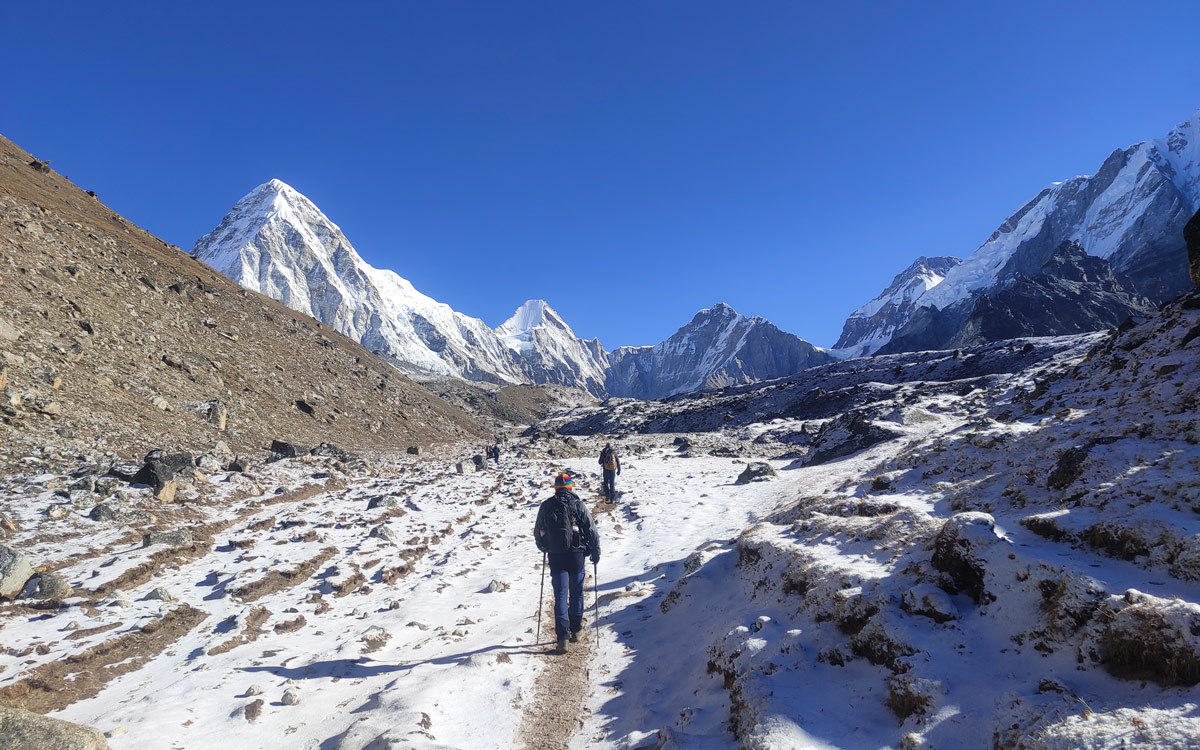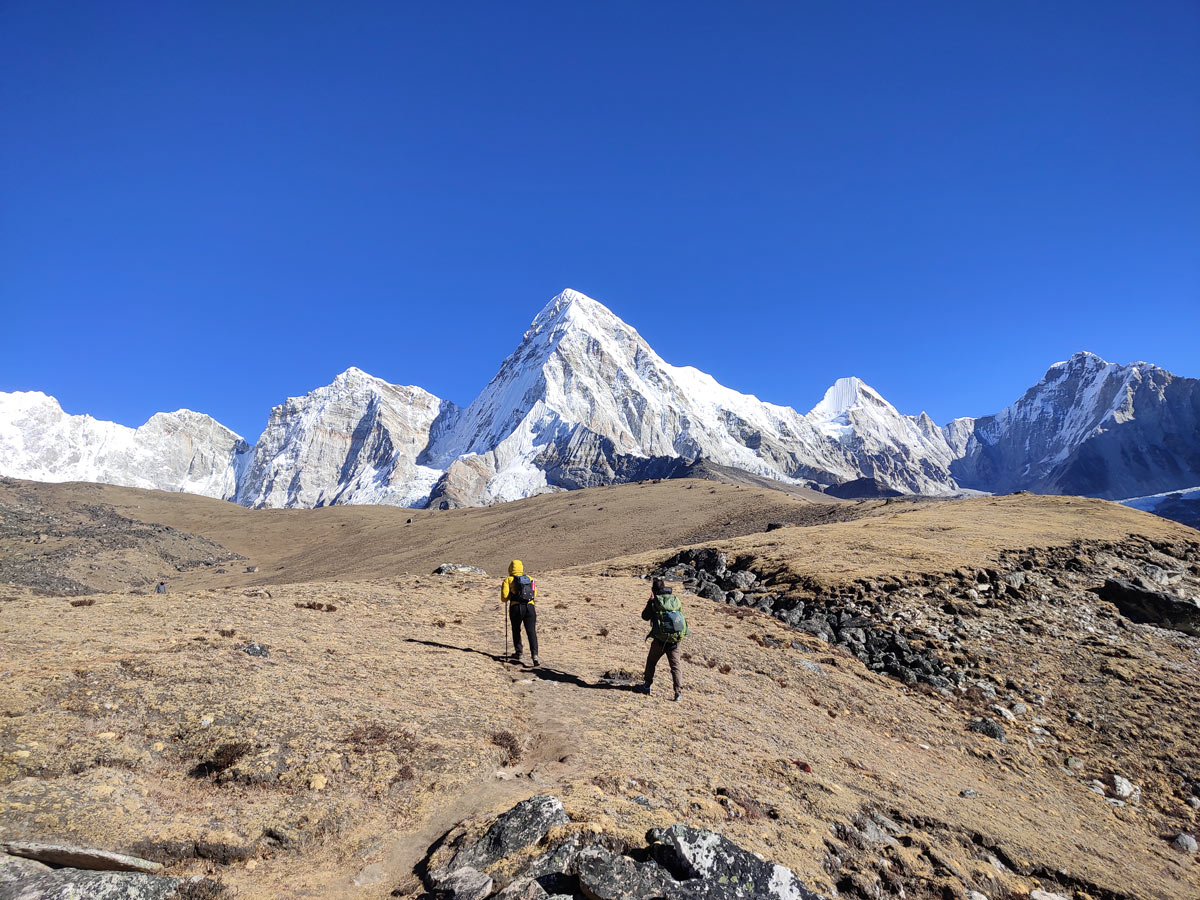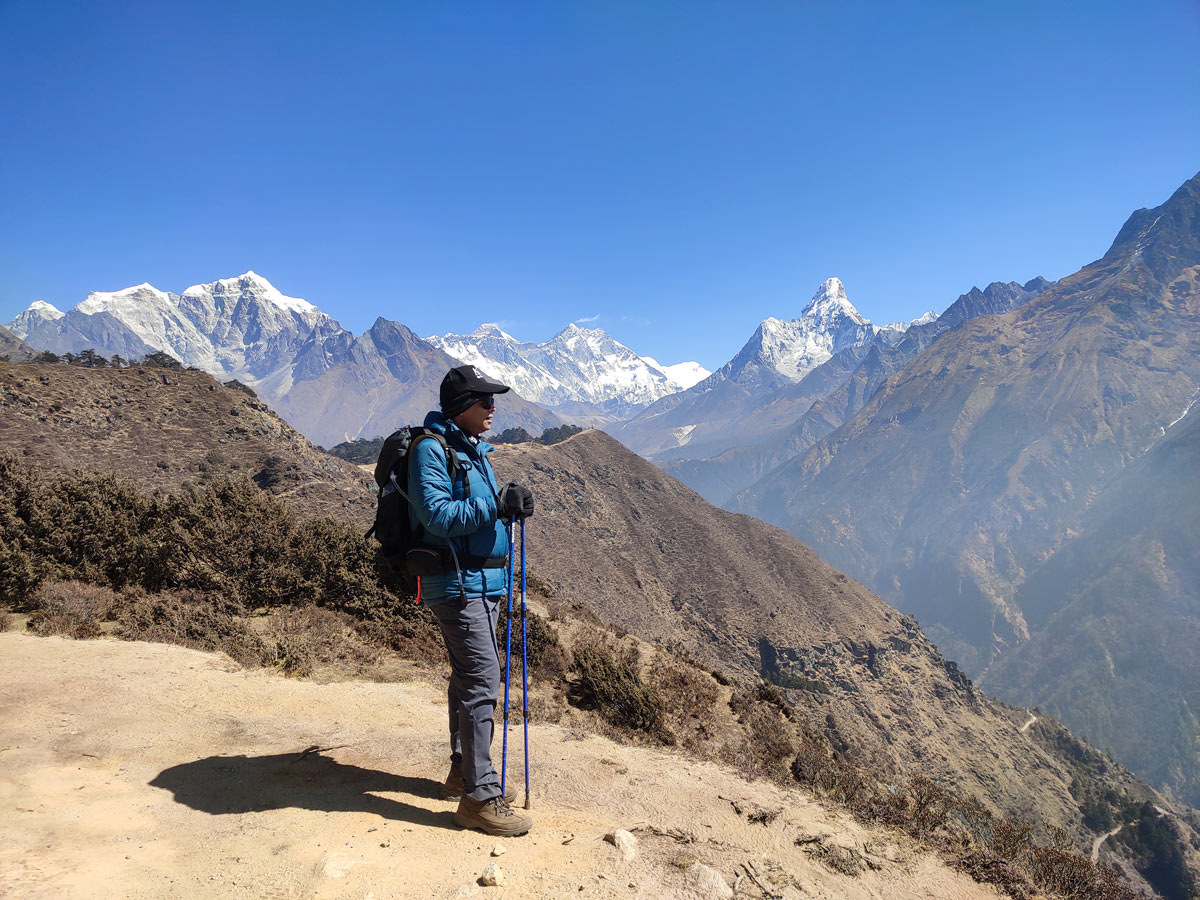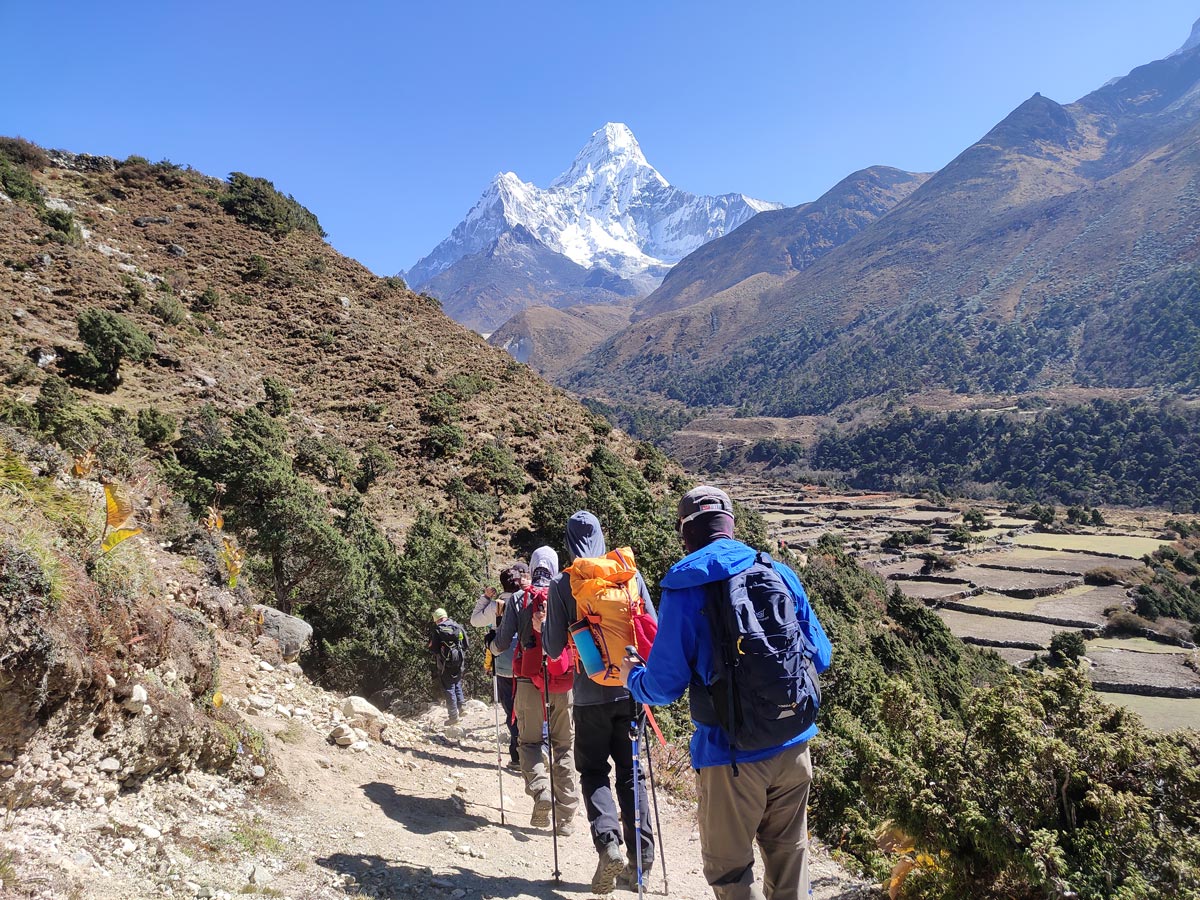Preparing for the Everest Base Camp trek requires proper planning and research. This trek is a highly sought-after destination in Nepal and a must-go for many hikers and trekkers around the world.
However, lack of adequate information can create a dilemma for those who are planning to prepare for the Everest Base Camp trek.
To provide some basic information, it is worth noting that the trail of Everest Base Camp is appropriate for both beginner as well as experienced hikers with the few months of training.
However, it is important to start training yourself physically and mentally at least two months before the trek.
Here are some suggestions and strategies, with the combination of cardiovascular and strength-building exercises, to prepare for Everest base camp trek:
1. Take enough time to prepare yourself
Preparing your body for high-altitude trekking requires a great deal of time and patience. To begin, it is recommended that you start your training at least two months before your scheduled trek. It’s important to remember that even slow progress is still progress, so it’s crucial to maintain consistency and patience during your training.
Avoid pushing your body too hard to achieve your goals, as this can lead to injury or exhaustion. Instead, prioritize rest and hydration to help your body gradually build the necessary strength and endurance for the trek.
2. Practice Hiking
If you’re planning a trek in the Himalayas, it’s essential to engage in hiking as part of your physical training. It’s highly recommended that you search for uphill hiking trails nearby and make it a habit to go hiking at least once or twice a week. Practice walking for 5 to 6 hours per day with minimal rest to build your endurance.
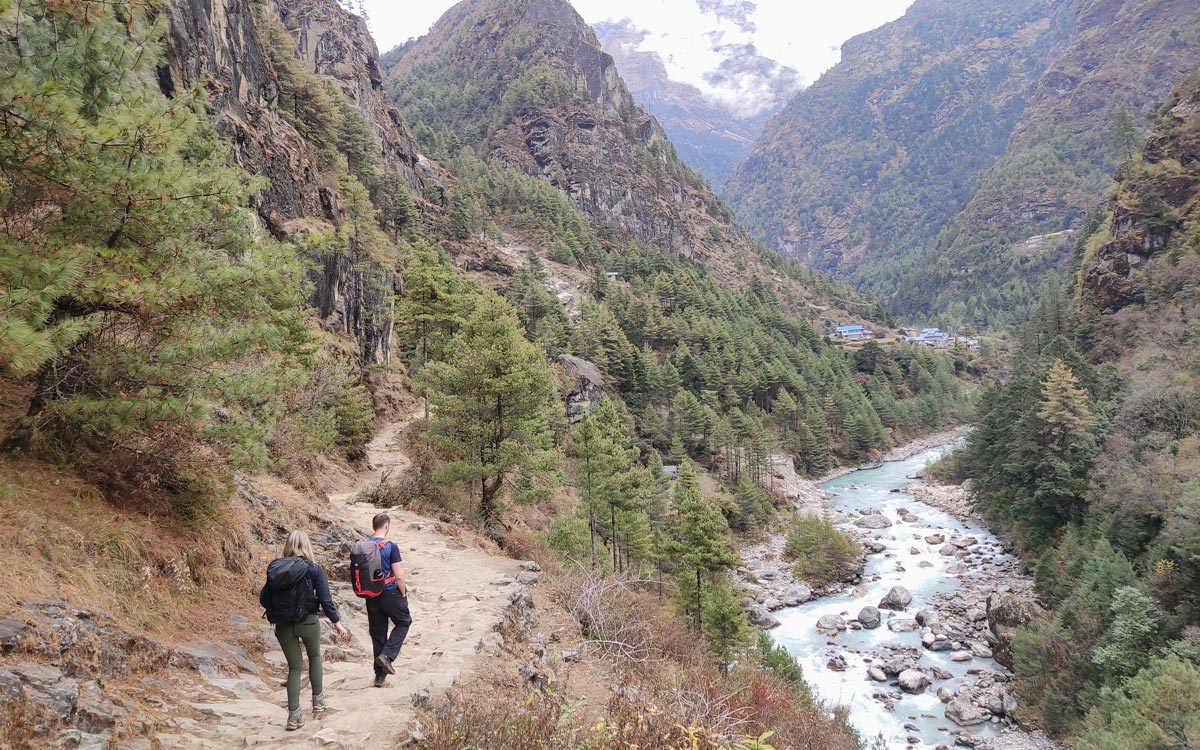
To improve your capacity to carry backpacks and walk, start by carrying a daypack and gradually increasing the weight. This will help your body adapt to the added weight and develop the necessary strength to carry a backpack during the trek.
It’s important to pay attention to your body’s signals during training. Remember to rest when needed, hydrate frequently, and eat a balanced diet to ensure that your body gets the necessary nutrients to support your training.
3. Workout in Gym
If you don’t have access to hiking trails, working out in the gym is another alternative to prepare for high-altitude trekking. Since altitude is the key challenge, focus on exercises that improve your cardiovascular fitness and endurance. Activities such as cycling, running, and stair climbing should be included in your workout routine.

To build up your stamina, practice running on the treadmill for at least 45 minutes and stair climbing for 10 minutes, followed by a slow walk to catch your breath. This sort of training will prepare you for the high altitude and long duration of the trek. By incorporating these exercises into your gym routine, you’ll build up the necessary stamina to tackle the challenges of high-altitude trekking.
4. Practice Cardio
To prepare for high-altitude trekking, it’s important to help your body work out with less oxygen. This is crucial for maintaining your breath and focus at high elevations. Outdoor activities like walking, jogging, swimming, and cycling are excellent ways to achieve this.
Set your goals and engage in cardio activities at least 3 to 4 times a week. Gradually increase the intensity and duration of your workouts over time to build up your cardiovascular fitness.

Remember that cardiovascular fitness is essential for preparing yourself for high-altitude trekking. By consistently engaging in cardio exercises, you’ll train your body to work efficiently with less oxygen, allowing you to maintain your breath and focus during the trek.
5. Eat healthy diets
It’s important to keep an eye on your nutrition as you begin your training for high-altitude trekking. Since you’ll be burning more calories every day, you’ll need to consume more calories to maintain your energy levels.
Consume complex carbohydrate foods like whole grains, fruits, and vegetables that provide long-lasting energy. Increase your protein intake to build up muscles and stay healthy.

Plan your meals ahead of time to ensure that you’re consuming the right food and the right amount of calories. Consult with a nutritionist or trainer for your personalized diet plan. By focusing on your nutrition and ensuring that you’re consuming the right foods, you’ll have the energy and strength you need to complete the trek.
6. Practice stretching
If you’re a beginner in yoga or stretching, it’s important to start slow and gradually increase the intensity of your practice over time. Practicing stretching and yoga can be beneficial for high altitude trekking as they help improve flexibility, reduce the risk of injury, and increase endurance.
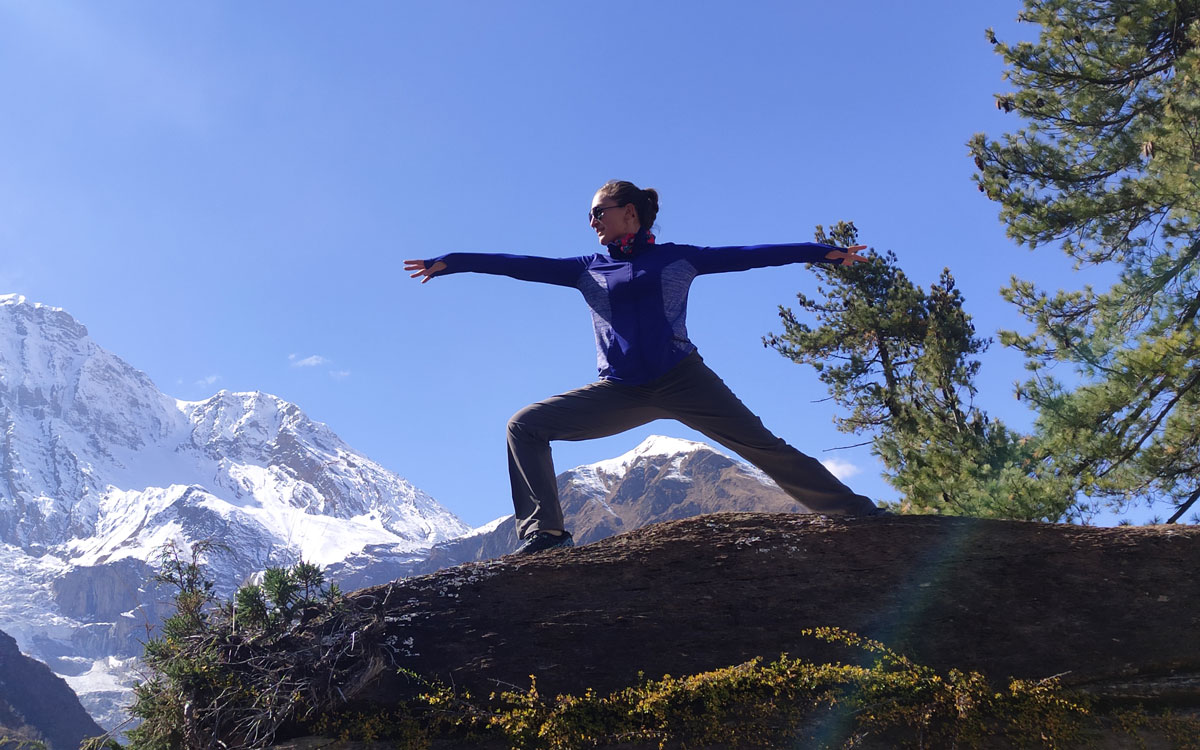
While stretching, focus on major muscle groups like your legs, hips, back, and shoulders as they are the major muscles used during trekking. Prioritize practicing yoga poses for balance and stability such as tree pose and warrior III, to improve your footing on uneven terrains.
Most importantly, consider working with a yoga instructor as they can help you practice through a practice tailored to your needs. With the guidance of a professional, you can learn to practice safely and effectively, improving your flexibility, balance, and endurance for the trek ahead.
7. Mentally prepare for Everest Base Camp Trek
Preparing for high altitude trekking is not just about physical training, but also about mental preparation. It is important to understand the challenges you are willing to take on and set realistic expectations for yourself.
Do your research and learn about the terrain, weather conditions of Everest region, and any physical hazards or risks of the destination you are planning to embark on. Instead of solely focusing on reaching the summit, try to enjoy the experience and appreciate the natural beauty around you.
Practicing mindfulness can also help you stay present in the moment, allowing you to fully embrace the journey. By mentally preparing yourself, you can ensure a more positive and fulfilling trekking experience.
Conclusion
By following the guidelines outlined above, you can effectively prepare yourself both physically and mentally for high altitude treks like Everest Base Camp. These habits will not only build strength and endurance but will also reduce anxiety and improve mental clarity.
Similarly, practicing daily yoga and stretching can help you avoid injury and refresh your body after the long hours of walking. Hence, with the consistent practice, you can build the confidence and stamina needed to fully enjoy your trekking adventure.
So, start preparing your body and mind from today and get ready for an unforgettable journey amidst the stunning landscape of Nepal.
